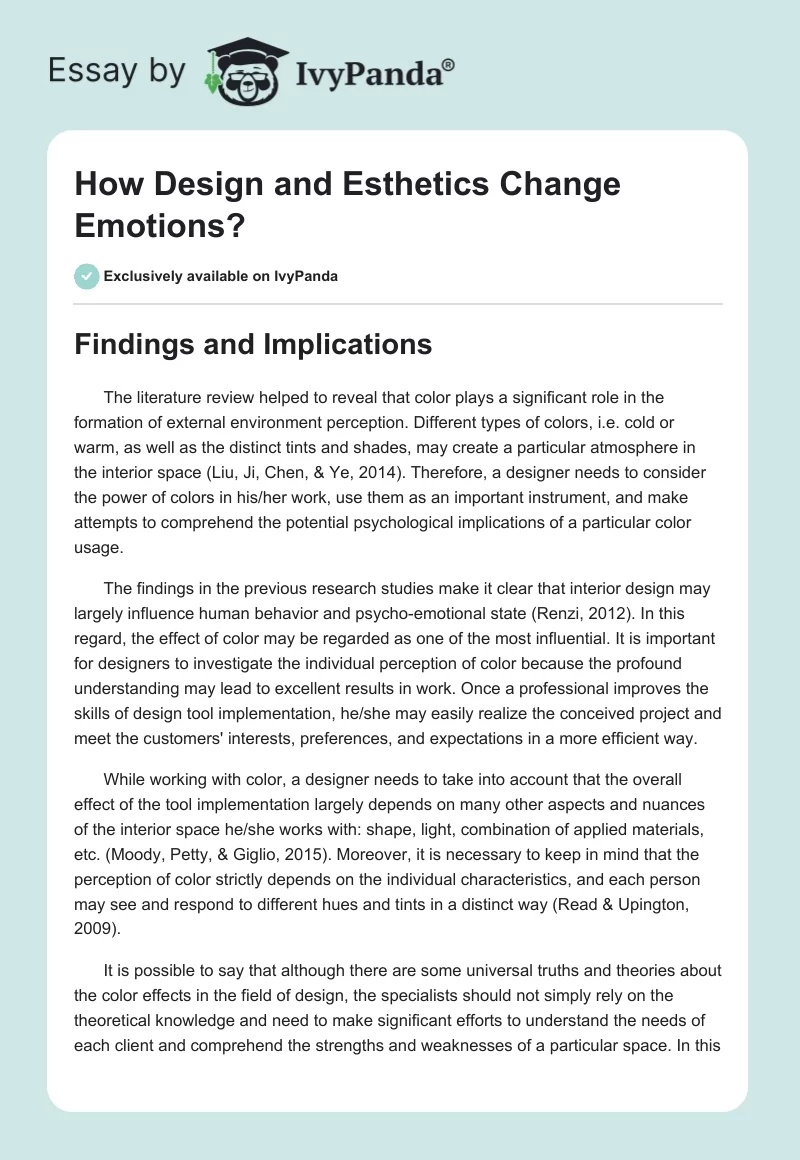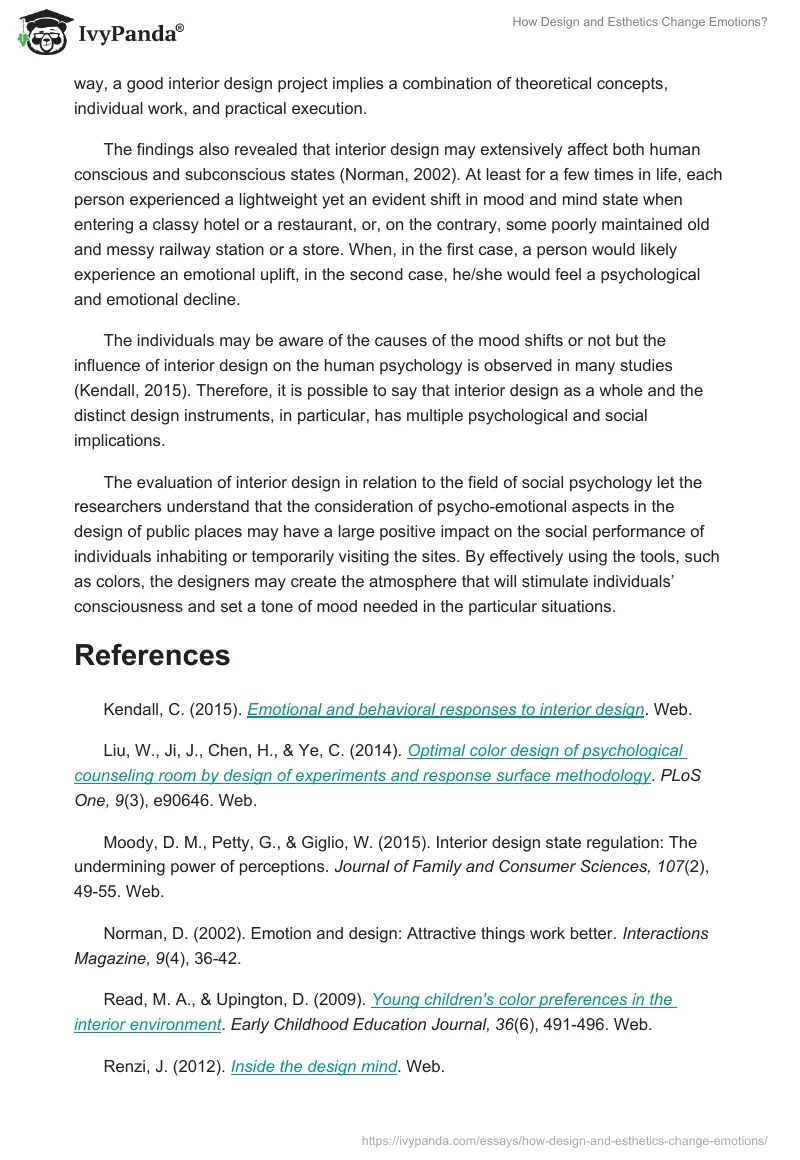Findings and Implications
The literature review helped to reveal that color plays a significant role in the formation of external environment perception. Different types of colors, i.e. cold or warm, as well as the distinct tints and shades, may create a particular atmosphere in the interior space (Liu, Ji, Chen, & Ye, 2014). Therefore, a designer needs to consider the power of colors in his/her work, use them as an important instrument, and make attempts to comprehend the potential psychological implications of a particular color usage.
The findings in the previous research studies make it clear that interior design may largely influence human behavior and psycho-emotional state (Renzi, 2012). In this regard, the effect of color may be regarded as one of the most influential. It is important for designers to investigate the individual perception of color because the profound understanding may lead to excellent results in work. Once a professional improves the skills of design tool implementation, he/she may easily realize the conceived project and meet the customers’ interests, preferences, and expectations in a more efficient way.
While working with color, a designer needs to take into account that the overall effect of the tool implementation largely depends on many other aspects and nuances of the interior space he/she works with: shape, light, combination of applied materials, etc. (Moody, Petty, & Giglio, 2015). Moreover, it is necessary to keep in mind that the perception of color strictly depends on the individual characteristics, and each person may see and respond to different hues and tints in a distinct way (Read & Upington, 2009).
It is possible to say that although there are some universal truths and theories about the color effects in the field of design, the specialists should not simply rely on the theoretical knowledge and need to make significant efforts to understand the needs of each client and comprehend the strengths and weaknesses of a particular space. In this way, a good interior design project implies a combination of theoretical concepts, individual work, and practical execution.
The findings also revealed that interior design may extensively affect both human conscious and subconscious states (Norman, 2002). At least for a few times in life, each person experienced a lightweight yet an evident shift in mood and mind state when entering a classy hotel or a restaurant, or, on the contrary, some poorly maintained old and messy railway station or a store. When, in the first case, a person would likely experience an emotional uplift, in the second case, he/she would feel a psychological and emotional decline.
The individuals may be aware of the causes of the mood shifts or not but the influence of interior design on the human psychology is observed in many studies (Kendall, 2015). Therefore, it is possible to say that interior design as a whole and the distinct design instruments, in particular, has multiple psychological and social implications.
The evaluation of interior design in relation to the field of social psychology let the researchers understand that the consideration of psycho-emotional aspects in the design of public places may have a large positive impact on the social performance of individuals inhabiting or temporarily visiting the sites. By effectively using the tools, such as colors, the designers may create the atmosphere that will stimulate individuals’ consciousness and set a tone of mood needed in the particular situations.
References
Kendall, C. (2015). Emotional and behavioral responses to interior design. Web.
Liu, W., Ji, J., Chen, H., & Ye, C. (2014). Optimal color design of psychological counseling room by design of experiments and response surface methodology. PLoS One, 9(3), e90646. Web.
Moody, D. M., Petty, G., & Giglio, W. (2015). Interior design state regulation: The undermining power of perceptions. Journal of Family and Consumer Sciences, 107(2), 49-55. Web.
Norman, D. (2002). Emotion and design: Attractive things work better. Interactions Magazine, 9(4), 36-42.
Read, M. A., & Upington, D. (2009). Young children’s color preferences in the interior environment. Early Childhood Education Journal, 36(6), 491-496. Web.
Renzi, J. (2012). Inside the design mind. Web.


